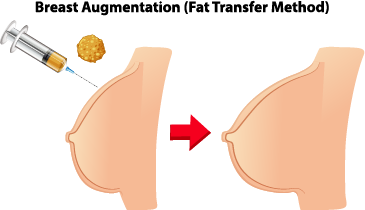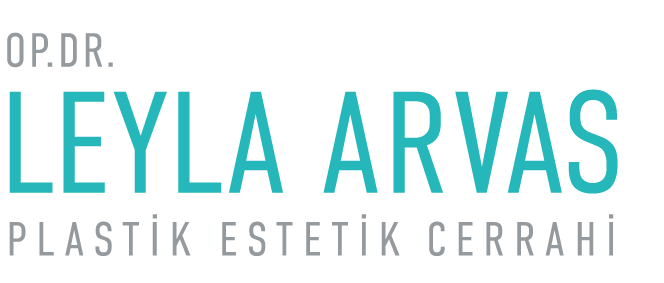Fat Transfer To Breast, is the technique of employing liposuction to remove undesired fat from one area of the body and using it to fill out the breasts, giving them a fuller, plumper appearance. Due to its numerous special advantages, this procedure of enhancing breast size is preferred by many women who want breast augmentation.
Cosmetic doctors take fat cells from your body using liposuction during a fat transfer breast augmentation. Your breasts will next receive an injection of the pure fat cells, expanding the cup size. The hazards of a fat transfer breast augmentation are lower than those of breast implants. To tighten up sagging breasts, you might also have a breast lift.
What’s Fat Transfer To Breast?
Breast augmentation has gone through several phases of change as one of the most popular forms of cosmetic surgery, from the material of the implants to how they are fashioned. There are now several choices available to women who want to improve their breasts, including a more natural procedure that does not use conventional silicone or saline implants.

A fat transfer breast augmentation is the name for this more natural procedure. This surgery includes injecting fat into your breasts from other regions of your body. The majority of patients want to have fat transplanted from “problem regions” such the back, arms, thighs, and belly. However, it’s crucial to assess the benefits and drawbacks of fat transfer breast augmentation before deciding whether the operation is good for you and your goals.
Who’s A Good Fit For Fat Transfer To Breast?
The silicone breast implants that may be placed into each breast and used to boost volume and alter breast form come to mind when most people think about breast augmentation.
Unfortunately, a breast augmentation alternative known as breast fat transfer is not well known among patients. They are also ignorant of the numerous advantages that this technique has to offer.
It causes less substantial overall alterations to breast size while resolving subtle concerns.
First off, breast fat transfer is perfect for patients who desire only a small adjustment to the size or form of their breasts. For instance, breast fat transfer is frequently the best way to correct an asymmetry between the right and left breasts.
Alternately, more subtle modifications can be achieved with this process. For instance, a tiny bit of fat can be put to the area above the nipple or to another particular location where adding volume will improve look. Low body fat individuals might not be suitable candidates for fat transfer. More fat cells must be able to be removed by your provider than will be used. That’s because some cells pass away as the process progresses. Low body fat individuals could require breast implants instead.
People who smoke, are obese, or go through rapid weight changes may also not be suitable candidates. You should ideally be in excellent health, smoking free, and able to maintain a healthy weight.
What Happens During Fat Transfer To Breast?
Breast augmentation with fat transfer is an outpatient treatment. You return home that day. You are given general anesthetic so that you can doze off during the procedure. Your healthcare provider will:
- Extracts fat deposits from various parts of your body using liposuction.
- Uses a centrifuge to spin the fat cells in order to clean them of any contaminants.
- Injects the pure fat cells into the various tissue layers of your breasts using specialized needles.
How Does Fat Transfer To Breast Work?
Technology is always evolving, just as in every other profession. We now get better results in the breast as well as other sections of the body thanks to the purification of the fat obtained using various machines designed for fat transfer and the injection of the proper proportions. By doing this, both the procedure’s durability and the likelihood that the transplanted fat cells would survive are increased.
This approach is employed by several plastic surgeons. Injections of fat are frequently used elsewhere on the body. In locations where the adipose tissue is normal, we have excellent outcomes. One of these areas is the breast. People who don’t want silicone, have adequate breast structure for this procedure, and have enough body fat can have fat injected into them.
The places that will be fat are first identified. Fat is mostly removed from the waist and abdomen. The insides of the legs, the knees, and other regions where fat builds up can also be treated with fat removal, though. Using sterile injectors, the liposuction process collects the fat in a confined, sterile environment before injecting it into the breasts. It is possible to transfer 300–450 ml of fat on average to each breast. In general, 60–70% of these oils are long-lasting. Attempting to inject additional fat might obstruct circulation and cause fat to decompose.
Where To Get Fat To Transfer For Breast?
Compared to the standard liposuction method, fat is removed more gradually. The recovered fats are then centrifuged to eliminate any unnecessary components. Rich, fatty stem cell tissue is prepared for the transfer and placed beneath the breast tissue. The tissue in injured areas returns to its pre-damaged state thanks to the injection of fatty tissues, which are quite rich in stem cells.
Only sedation or general anaesthetic is used to execute the fat transfer breast augmentation procedure. The patient can conveniently be released the same day. After the procedure, there won’t be any discomfort in the breast region; instead, areas where the fat was removed may experience swelling and bruising. The breast area will have only little edema, which will significantly improve after 15 days.
The fats provided have a 40–50% persistence rate. Usually, a size increase is made available using this procedure. After six months, the same operation may be conducted once more upon request.
Breast Augmentation Vs. Fat Transfer To Breast
Breast augmentation is for healthy individuals who desire to look better. There is no medical need for it. Breast augmentation techniques include fat transfer and breast implants.
Breast cancer surgery is followed by breast reconstruction. After a mastectomy, it reconstructs either one or both breasts (breast removal). Breast reconstruction requires breast implants, which you must have.
Benefits Of Fat Transfer To Breast
For patients who want to enlarge their breasts while also lowering body fat in other areas, a breast fat transfer is the perfect treatment. It’s important to note that less fat is typically removed during breast fat transfer than would be removed during a conventional liposuction operation. But for many patients who want to alter the overall appearance of their silhouette, the overall impact can still be effective.
Last but not least, a lot of patients discover that breast fat transfer is a more organic way to achieve their goal for larger, fuller breasts. Their own body fat is just being moved from one place to another, not a foreign item being injected into the breast. This not only makes the material being used less intrusive, but it also gives patients who get breast augmentations the natural appearance they almost universally want.
Possible Risks And Side Effects Of Fat Transfer To Breast
After breast fat transfer, adverse effects are possible in certain people. However, there is always a chance for negative effects with every surgical surgery. Thankfully, your surgeon will be on hand to handle any problems you might have.
Cysts or solid lumps that might develop in the breast following fat grafting are the most typical negative effects of breast fat transfer. Fat necrosis, or the death of fat cells, is another potential adverse effect. But as was said above, your surgeon would have anticipated this possibility by executing the grafting in phases and/or somewhat overestimating the amount of fat that is to be transplanted.
It’s important to note that breast fat transfer really entails two surgeries, making the total process somewhat more invasive than conventional breast augmentation. Additionally, because several parts of your body may be impacted, longer downtime might be necessary .
It’s also vital to keep in mind that, while breast fat transfer is ultimately beneficial as a long-term alternative to breast augmentation, this also implies that it cannot be undone. An alternative is to have a silicone or saline breast implant removed.
The good news is that breast fat transfer really carries less risk overall than implant-based augmentation. For instance, implant breast augmentation risks include capsular contracture, potential rupture, rippling of the implants, and inadequate placement. Although these occurrences are common, using body fat has a considerably reduced chance of complications. It won’t be rejected by your body because it is your own fat.
How Long Do Fat Transfer To Breast Results Last?
A fat transfer breast augmentation produces effects that last a lifetime. The ultimate effects may not be visible for up to six months. The fat cells move into their new locations throughout this period and remain there for life. During the transfer, providers inject more fat cells than necessary since some cells die after the injection.
The majority of women who get fat transfer breast augmentations are happy with the outcome. If you’re not happy, your doctor can suggest trying a different fat transfer method.
Fat Transfer To Breast Recovery
Your medical professional will fit you with a surgical bra and put an elastic bandage across your chest. These binders aid in the placement of the fat deposits. Take a week off from work and other physical pursuits, as you should.
For up to three weeks after liposuction, you can have pain, bruising, swelling, and discomfort in your breasts and the affected regions. Up to six months may pass before swelling goes away. These actions will speed up your recovery:
- To relieve strain on your breasts, sleep on your back.
- Antibiotics and painkillers should be used as prescribed by your doctor.
- Avoid squeezing your breasts by dressing loosely.
Your breasts can be made larger by a cosmetic operation called a fat transfer breast augmentation. Using liposuction, surgeons can remove fat from your arms, back, hips, and thighs. These parts seem thinner thereafter. The fat cells are injected into your breasts, where they stay for the rest of your life.
Fat Transfer To Breast Prices
For each patient, the majority of natural breast augmentation treatments vary. However, it depends on how many locations were liposuctioned and how much fat was moved overall.
You should have an examination by our doctor in order to learn more specifically about fat transfer and to learn which procedure is best for you. At the conclusion of the test, you may learn your fat transfer pricing information in the most precise manner.
It is unlawful for facilities that have received Ministry of Health accreditation to list pricing on their website. In order to get in touch with us and learn more about fat transfer to the breasts in Turkey, please phone +90 212 234 6427
